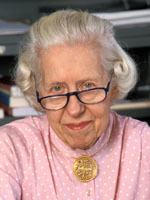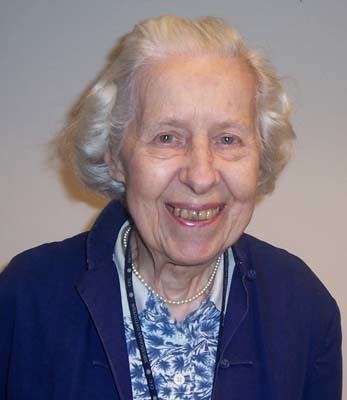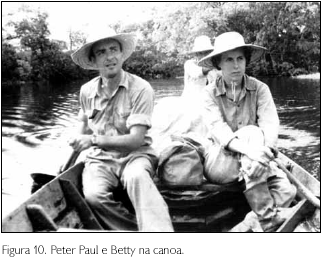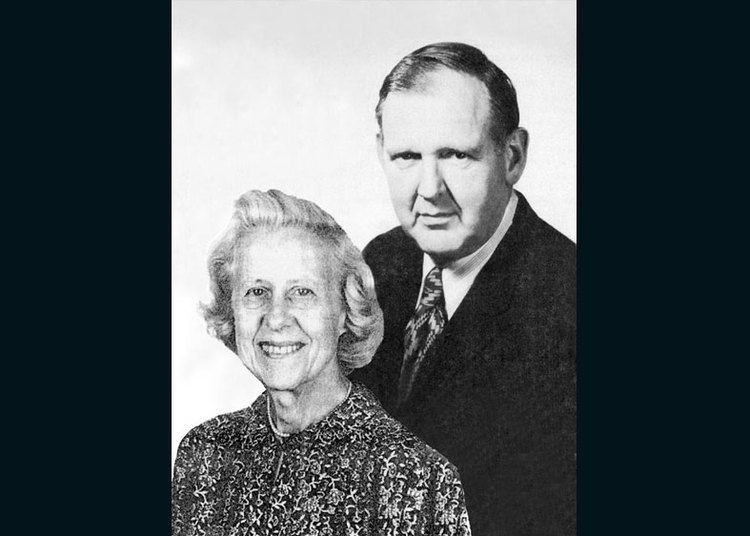Name Betty Meggers | ||
 | ||
Books Amazonia: Man and Culture in a Counterfeit Paradise Education Born 5 December 1921 (age 90), United States Died 2 July 2012 (aged 90) Citations 8,370 Partner Clifford Evans Affiliation Smithsonian Institution Role Archaeologist Fields Anthropology in South America Institutions National Museum of Natural History, Smithsonian Institution Similar Nadia Abu El Haj, Susan E Alcock, Wendy Ashmore | ||
Betty Jane Meggers (December 5, 1921 – July 2, 2012) was an American archaeologist best known for her work in South America. She was considered influential at the Smithsonian Institution, where she was long associated in research, and she wrote extensively about environmental determinism as a shaper of human cultures.
Contents

Education and personal life

Betty Jane Meggers was born in Washington, D.C., to Dr. William Frederick Meggers and Edith R. Meggers. Her father was an internationally recognized spectroscopist as well as an archaeology enthusiast. He often took the family to visit Native American sites.

Betty Meggers graduated from the University of Pennsylvania with a bachelor's degree in 1943 and a year later earned a master's degree from the University of Michigan. After obtaining her master's degree, Meggers attended Columbia University to complete her Ph.D. Meggers's dissertation, entitled The Archaeological Sequence on Marajo Island, Brazil with Special Reference to the Marajoara Culture.

While at Columbia, Meggers met Clifford Evans, another archaeology graduate student. On September 13, 1946, the two were married.
After a long career, Meggers died on July 2, 2012.
Research
Most of Meggers's research was concentrated in South America, particularly in Ecuador, Peru, Venezuela, Chile, Brazil, and Guyana. She also conducted research in the Lesser Antilles and Micronesia.
She first worked in anthropology at the age of 16, volunteering at the Smithsonian Institution and helping to reconstruct pots excavated from Pueblo Bonito, an Ancestral Pueblo village in New Mexico.
At the University of Michigan, Meggers was introduced to ancient ceramics from Marajó Island, in the Amazon Basin of Brazil. She published her first scientific article on the Marajoara culture in 1945. Meggers was also among those who believed that early cultures did not develop in the Amazon basin, believing it inhospitable to human settlement. She thought settlements were established by migrants from highland areas. In the early 21st century, new archeological finds have begun to overturn her conclusions.
In the 1960s, Meggers and Evans proposed a controversial diffusionist theory to explain similarities between the pottery of the Valdivia culture in Ecuador, dated to 2700 BC, and the pottery of the Early and Middle Jomon on the island of Kyushu, Japan. During Meggers and Evans's initial period of work in Ecuador, "Ceramic Phase A" of Valdivia was believed to be the oldest pottery produced in South America. Meggers bolstered her argument that trans-Pacific migrants from Japan were responsible for this pottery by noting that plants, pathogens, and parasites of Japanese origin are found among Andean populations. Her theory was challenged by other archaeologists due to the distance between Ecuador and Japan, and a lack of evidence for complex Jomon sailing technologies. Excavations in the early 1970s by other researchers found pottery at Valdivia and related sites pre-dating Phase A. Archeologists thus generally now believe that pottery rose independently in the Valdivia and preceding cultures.
Meggers and Evans also developed a system by which pottery fragments could be analyzed. In addition, Meggers was among the first to examine environmental influences on ancient societies and to frame culture as an adaptation by humans to the environment.
Professional affiliations
Meggers was affiliated with the following:
At the time of her death in 2012, she was:
Awards
Meggers was widely acknowledged for her contributions to the field of archaeology and South American studies. Some of her awards are:
Publications
Meggers wrote nearly two hundred articles, book reviews, translations, and books. She published in many leading scientific journals such as American Anthropologist, American Antiquity, Science, and Scientific American. In addition, she published in less-specialized magazines including Archaeology, Americas, and National Geographic.
